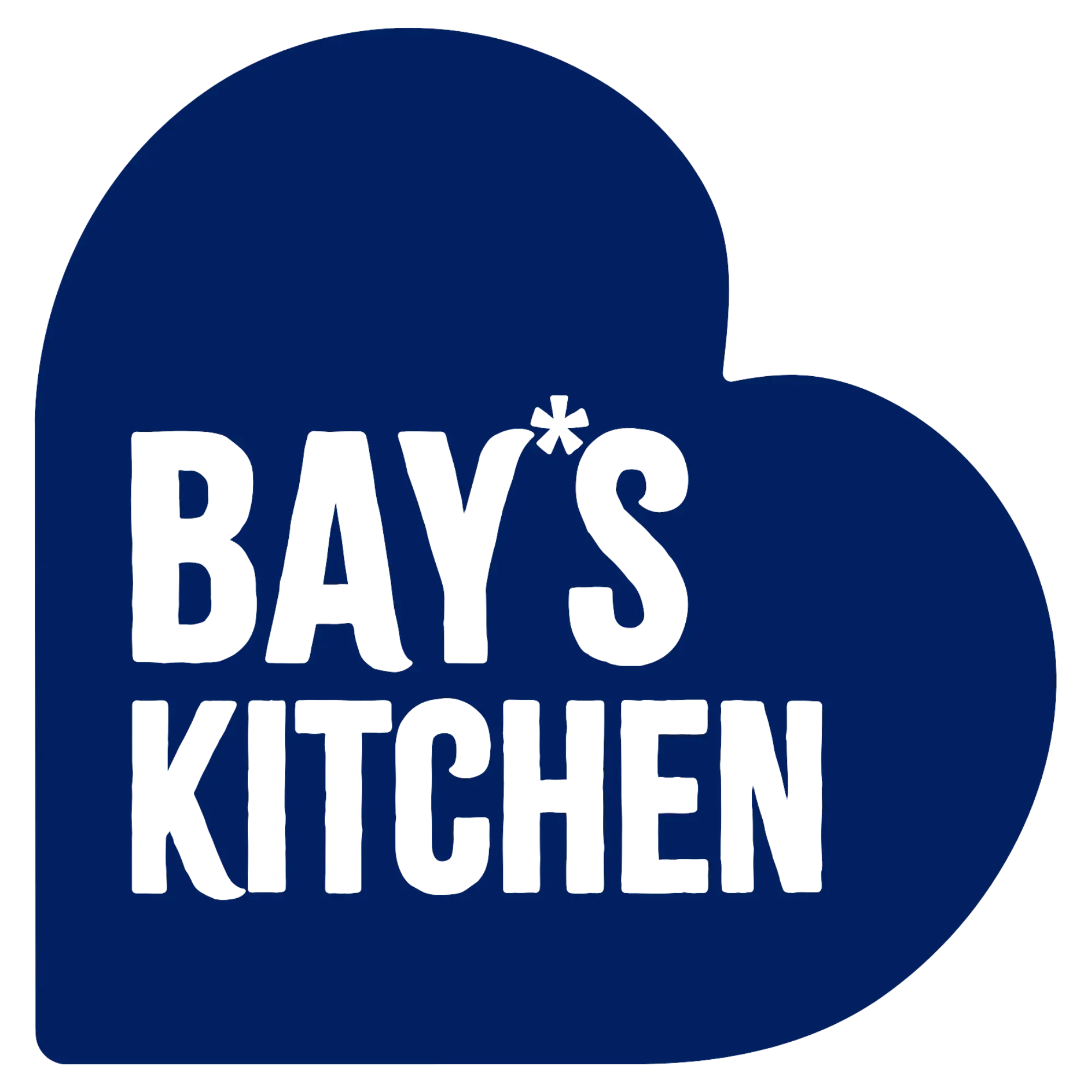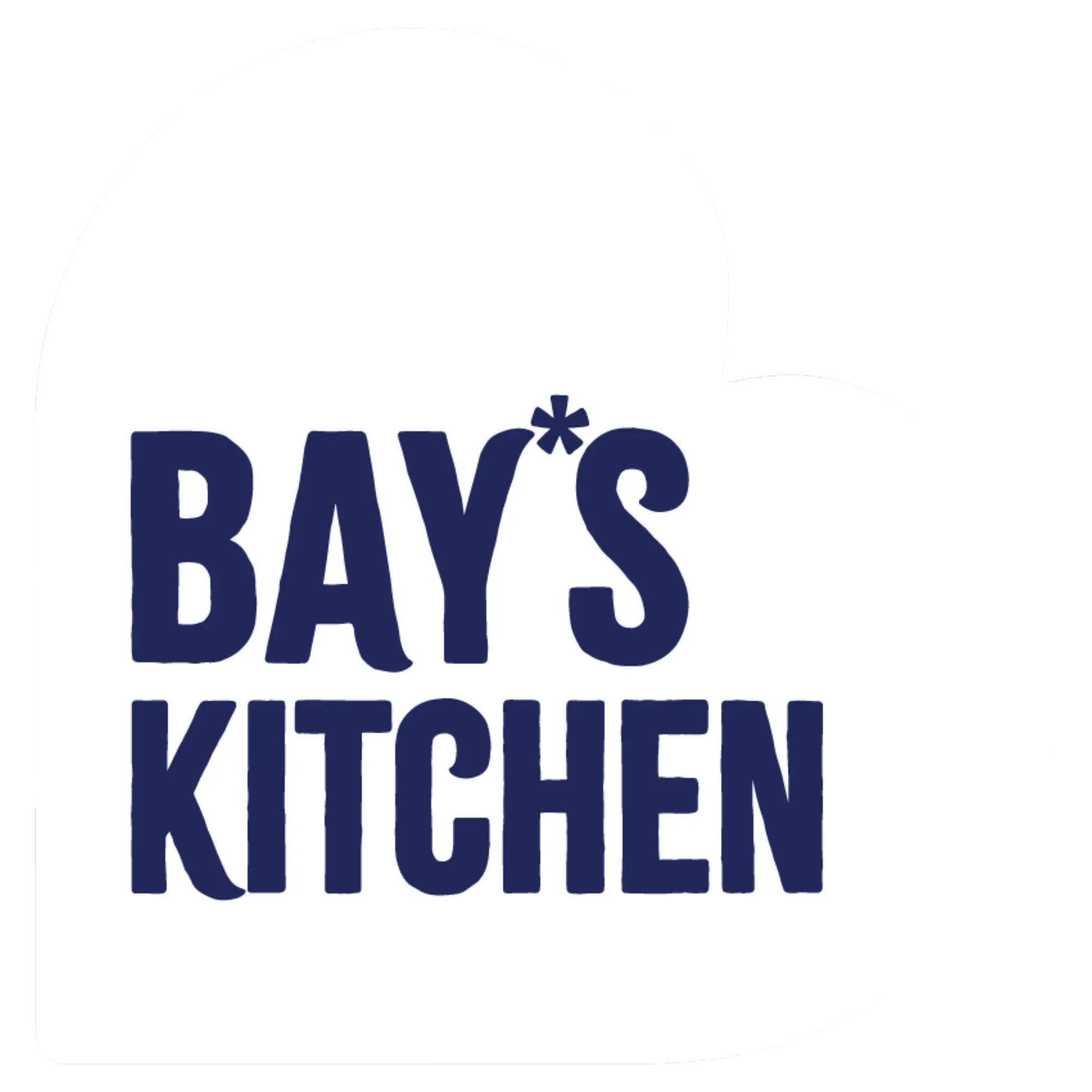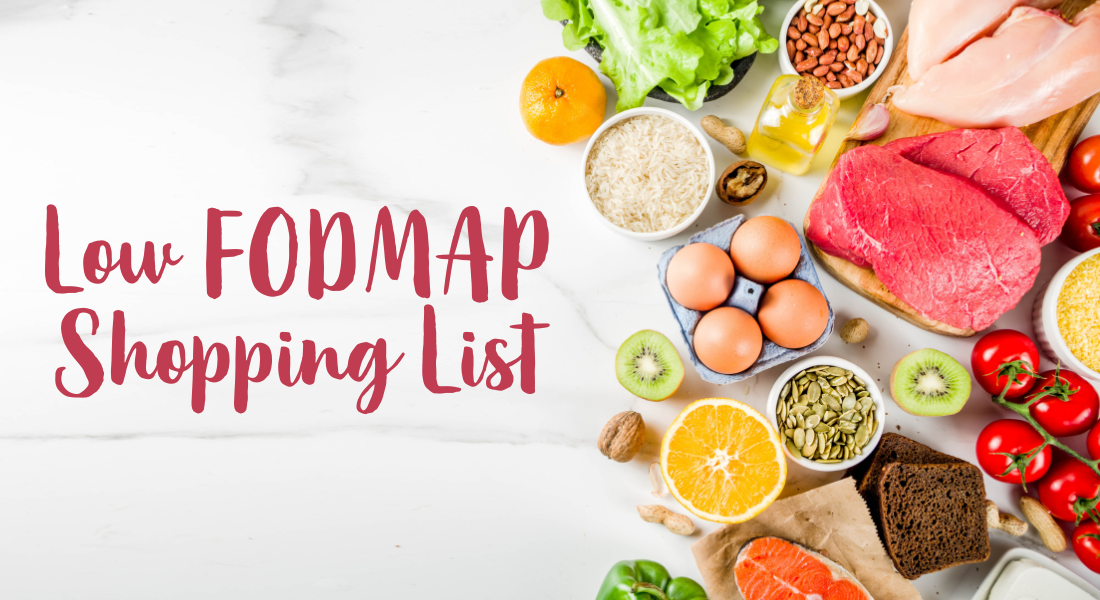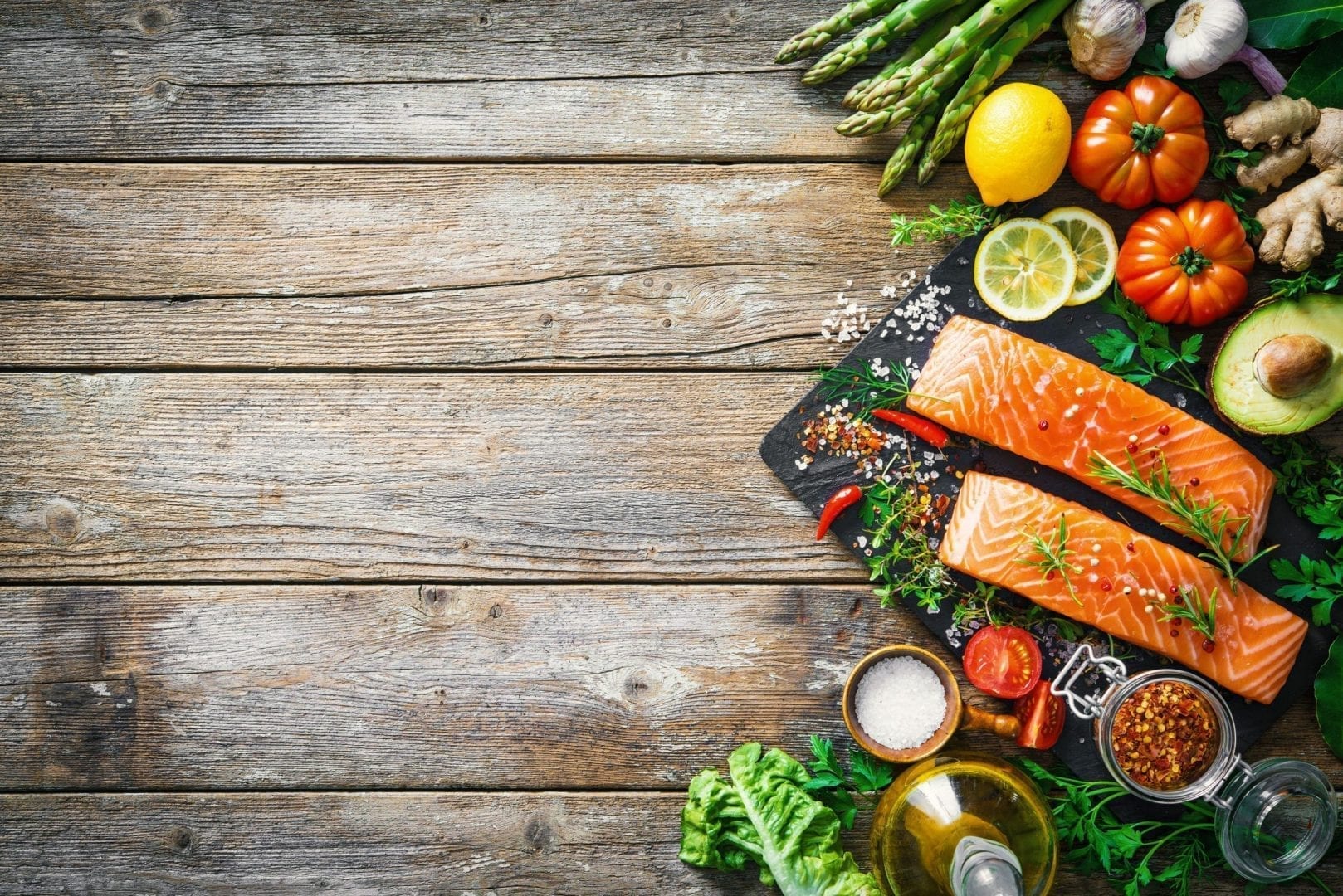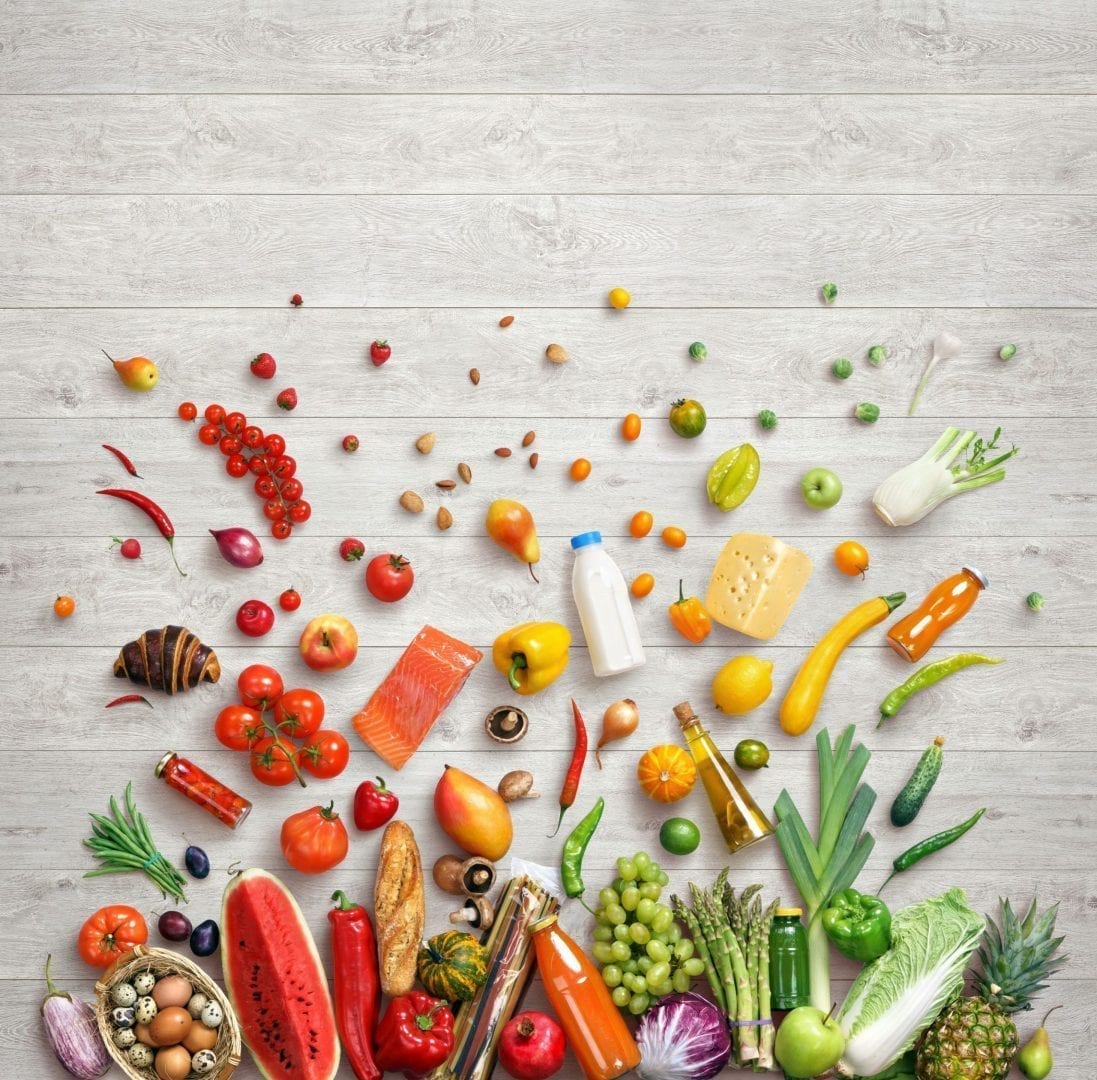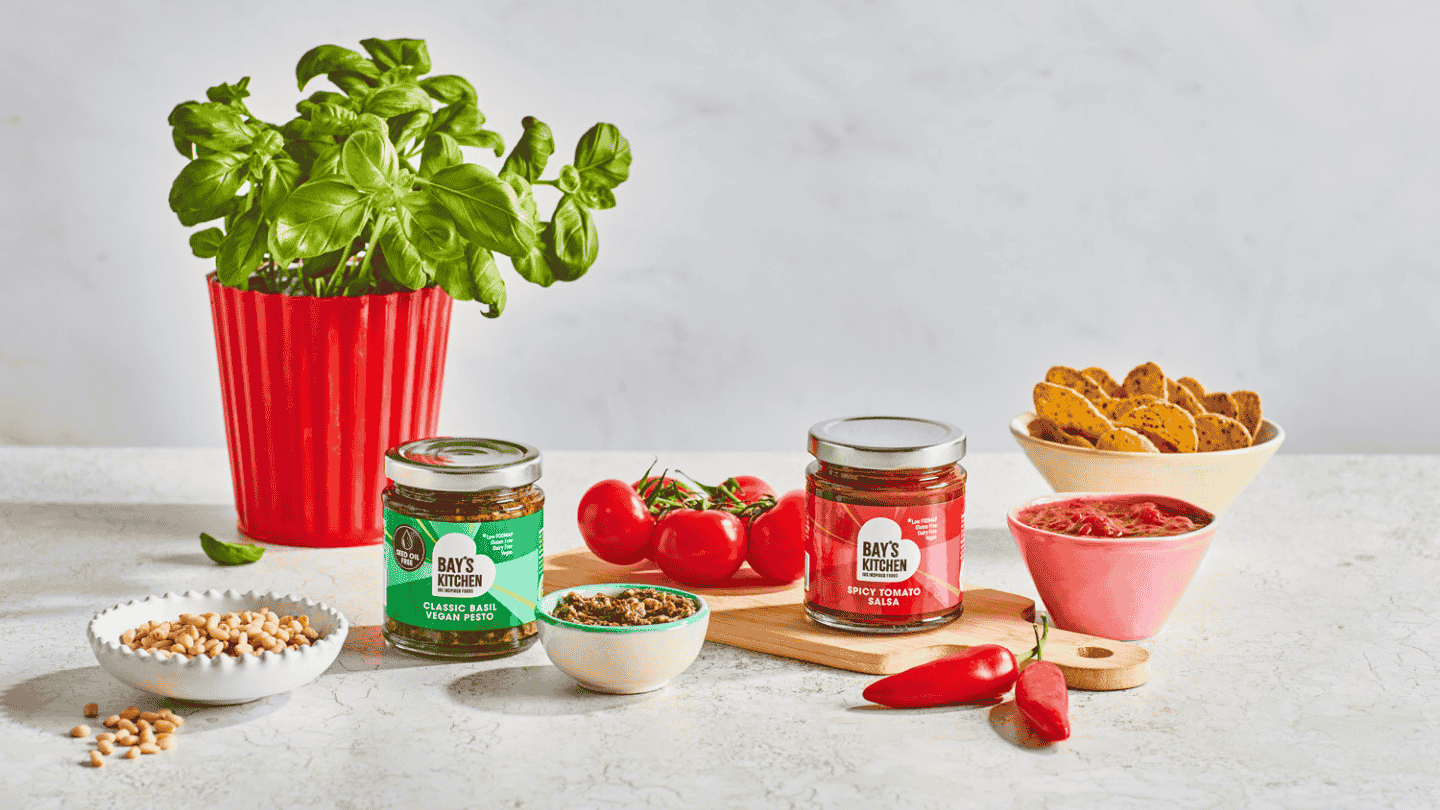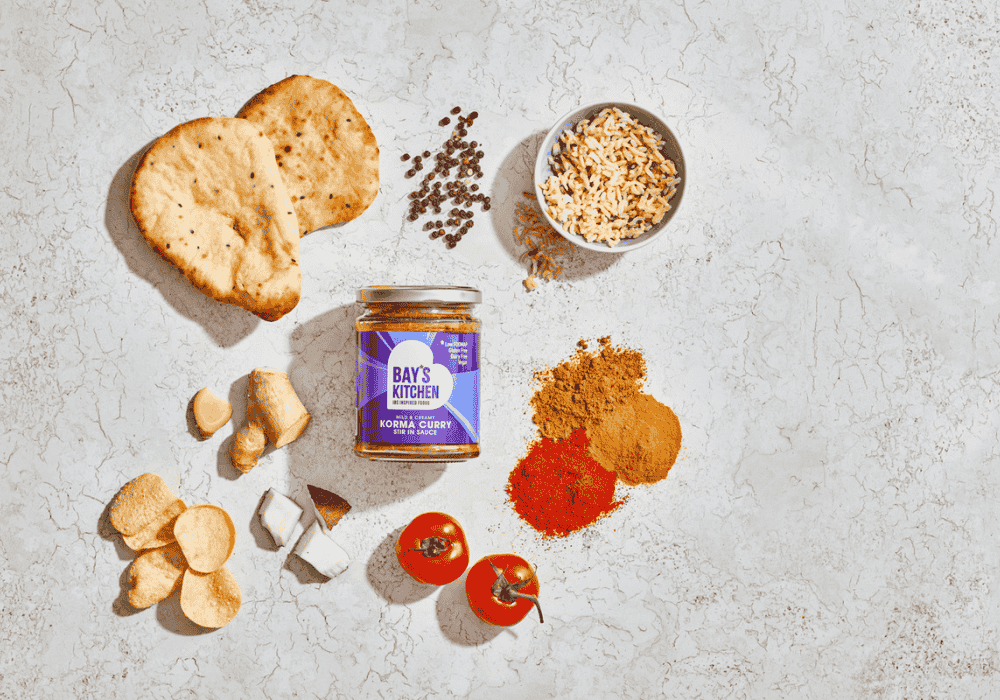Following the low FODMAP diet can be time consuming and difficult. Even when you get good at reading food labels, it’s not always obvious which foods are off limits.
To make following the diet easier, we thought it would be helpful to share a comprehensive list of low FODMAP foods that you can have on hand for easy reference. We’ve also pulled all of this information together in an easily digestible Low FODMAP Shopping List (see below) that you are free to print, share, and use however you wish.
All of the foods recommended are low FODMAP at certain quantities, so please do check the Monash App before consuming to ensure you are within low FODMAP guidelines. And don't forget to stock up on your Bay's Kitchen favourites to add more flavour to your dishes!
A Quick Overview of the Low FODMAP Diet
FODMAPs are short-chain carbohydrates that can be poorly absorbed in the small intestine, leading to digestive symptoms like bloating, gas, and abdominal pain.
Identifying safe foods can be challenging for those following a low-FODMAP diet, as different FODMAPs can be found in a wide range of foods. For instance, fructose is a common FODMAP in fruits, while lactose is prevalent in dairy products, and fructans can be found in grains and vegetables. But not all foods within food groups are off limits!
The low-FODMAP diet has been shown to alleviate symptoms for individuals with irritable bowel syndrome (IBS) and other gastrointestinal issues, so it’s essential to educate yourself on which foods are best to avoid, as well as which foods are safe to consume and in what quantities.
Your Low FODMAP Shopping List
A low-FODMAP shopping list should include various food groups for a balanced diet, such as proteins, fruits, vegetables, dairy and alternatives, nuts and seeds, and herbs and spices (we’ll go through each of these areas in more detail below).
Remember that sticking to low-FODMAP foods during the elimination phase is key to easing digestive symptoms, but the reintroduction phase is also important. By slowly reintroducing high-FODMAP foods one at a time, you can figure out which ones might be causing issues for you. Everyone's tolerances are different, so it's important to identify your specific triggers. This way, you can create a balanced, personalised low-FODMAP diet that works best for your body.
Low FODMAP Protein
Protein-rich foods like meats, poultry, and fish are naturally FODMAP-free, making them excellent choices for a low-FODMAP diet. However, be cautious with processed and marinated meats, such as sausages or salami, as they may contain additional ingredients like garlic and onion.
For vegetarian and vegan options, the main FODMAP to watch out for is GOS, present in legumes and pulses. Some high FODMAP examples include red kidney beans, split peas, falafels, and baked beans.
Here's are some low-FODMAP protein sources:
- Bacon
- Beef
- Chicken
- Tinned
- chickpeas
- Eggs
- Firm Tofu (V/VE)
- Fish
- Tinned lentils (V/VE)
- Pork
- Prawns
- Steak
- Tinned tuna
- Turkey
Low FODMAP Fruits
When choosing low-FODMAP fruits, it's essential to be mindful of the main FODMAPs present in them, namely sorbitol and excess fructose. According to Monash University, fruits high in excess fructose include apples, pears, mangoes, cherries, figs, pears, watermelon, and dried fruit. On the other hand, fruits rich in sorbitol include apples, blackberries, pears, peaches, and plums. Many fruits contain both fructose and sorbitol, such as apples, pears, and cherries.
Here's are some low-FODMAP fruits that you can enjoy while managing your FODMAP intake:
- Avocado
- Banana (firm)
- Blueberries
- Cantaloupe
- Clementine
- Cranberries (fresh)
- Coconut
- Cumquats
- Dragon Fruit
- Grapes
- Guava
- Honeydew Melon
- Kiwi
- Lemon
- Lime
- Mandarin
- Orange
- Passion Fruit
- Pineapple
- Raspberries
- Rhubarb
- Strawberries
Low FODMAP Vegetables
When selecting low-FODMAP vegetables, it's important to consider the primary FODMAPs found in them: fructans and mannitol. Fructans are particularly abundant in vegetables like artichokes, garlic, leeks, onions, and spring onions. On the other hand, mannitol is rich in cauliflower and certain types of mushrooms.
Here's a list of low-FODMAP vegetables to help you manage your FODMAP intake whilst still enjoying a variety of flavours and nutrients:
- Bean Sprouts
- Beetroot (pickled)
- Bell Peppers
- Bok Choy Broccoli
- Cabbage
- Carrots
- Celeriac
- Collard Greens
- Courgette
- Cucumber
- Edamame
- Green Beans
- Kale
- Lettuce
- Olives
- Oyster Mushrooms
- Parsnip
- Potatoes (white/sweet)
- Radish
- Spinach
- Squash
- Swede
- Swiss Chard
- Tomato
- Turnip
- Zucchini
Low FODMAP Grains
When it comes to grains and cereals, the primary FODMAPs to watch out for are fructans. Some common grain and cereal products with high fructan content include wholemeal bread, rye bread, wheat-based muesli and wheat pasta.
Here are some low-FODMAP grain and cereal options:
- Corn Tortillas
- Gluten-Free Pasta
- Oats
- Polenta
- Quinoa
- Quinoa Pasta
- Rice
- Sourdough Bread
Low FODMAP Dairy Foods & Alternatives
Dairy products can be tricky in a low-FODMAP diet due to the presence of lactose, a FODMAP commonly found in items like soft cheeses, milk, and yoghurt. However, some dairy products can still be enjoyed in moderation.
When opting for milk alternatives, remember that they don't naturally contain calcium. It’s best to choose calcium-fortified options to ensure you maintain a balanced and nutritious diet.
Here's a list of low-FODMAP dairy products and alternatives:
- Almond Milk
- Brie
- Butter
- Camembert
- Cheddar Cheese
- Tinned Coconut Milk
- Coconut Yoghurt
- Feta
- Gruyere
- Lactose-Free Cream Cheese
- Lactose-Free Milk
- Lactose-Free Yoghurt
- Manchego
- Mozzarella
- Parmesan
- Rice
- Milk
- Swiss Cheese
Low FODMAP Nuts, Seeds & Oils
Most seeds are considered low FODMAP, making them a suitable addition to your diet. However, certain nuts may contain GOS and fructans, which are FODMAPs that can trigger digestive symptoms. In particular, steer clear of cashews and pistachios.
Here are some of the low-FODMAP nuts, seeds, and oils that you can enjoy:
- Black Beans
- Brazil Nuts
- Chestnuts
- Chia Seeds
- Garlic Infused Oil
- Hemp Seeds
- Macadamia
- Olive Oil
- Peanuts
- Pecan
- Pine Nuts
- Poppy Seeds
- Pumpkin Seeds
- Sunflower Seeds
- Walnuts
Low FODMAP Herbs & Spices
Herbs and spices can add flavour and variety to your low-FODMAP meals without triggering digestive symptoms. Most herbs and spices are naturally low in FODMAPs, making them a great way to enhance your dishes. Whilst some exceptions exist, such as garlic and onion-based spices, the small amounts typically used in cooking generally make them well-tolerated. Monitor your tolerance and check ingredient labels to ensure a balanced and enjoyable low-FODMAP diet.
Here's a list of low-FODMAP herbs and spices:
- Basil
- Bay leaves
- Black pepper
- Cinnamon
- Cloves
- Coriander
- Cumin
- Ginger
- Lemongrass
- Mint
- Nutmeg
- Oregano
- Paprika
- Parsley
- Rosemary
- Sage
- Tarragon
- Thyme
- Turmeric
Low FODMAP Extras

Bay's Kitchen was founded out of a need for tasty, convenient, and low-FODMAP food options. With traditional condiments, sauces, and stocks often containing high-FODMAP ingredients like garlic and onions, Bay's Kitchen aims to fill the gap in the market. Our range of products offers a variety of delicious and IBS-friendly alternatives, making it easier to enjoy flavourful meals whilst maintaining a low-FODMAP diet.
Here are some of our low FODMAP-certified products to stock up on:
Low FODMAP Meal Planning
Creating well-balanced, low-FODMAP meals doesn't have to be challenging. Here are some helpful tips:
- Incorporate a variety of low-FODMAP foods from each food group
- Experiment with herbs and spices to enhance flavours
- Plan meals in advance to ensure you have the right ingredients on hand
Start by exploring some simple swaps that can help you transition to a FODMAP-friendly lifestyle with ease. Check out our article on easy low-FODMAP swaps for inspiration and practical tips.
And, for more low-FODMAP meal inspiration, visit our recipes page for a wide selection of delicious and nutritious options. You can also check out our sample 1-day meal plan for a more structured approach to managing your diet.
Low FODMAP Printable Shopping List
To help make your next grocery trip a breeze, we've created a printable low-FODMAP shopping list. This comprehensive list includes a variety of FODMAP-friendly foods, ensuring you have everything you need to create delicious and nutritious meals while managing your dietary needs.
Simply print it out and bring it along to the supermarket, or access it from your phone for a convenient, on-the-go reference.
Please note that everyone's IBS and gut health is different. If you have an intolerance or sensitivity to certain foods, please remove these from your shopping list. We always recommend keeping a Food Diary to keep track of symptoms, so you can refer back and analyse. This will help you spot if any ingredients are causing upset to your stomach.

Navigating the world of low FODMAP foods may seem daunting at first, but with the right resources and support, it can be a manageable way to improve your digestive health. We hope that this shopping list helps to empower you to create balanced, enjoyable, and stress-free meals.
Remember to consult a healthcare professional for personalised guidance, and feel free to explore our IBS blog for more low-FODMAP inspiration and tips!
